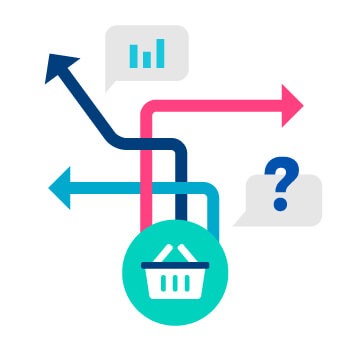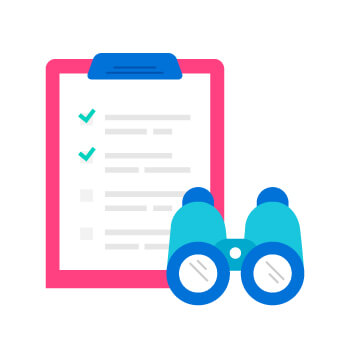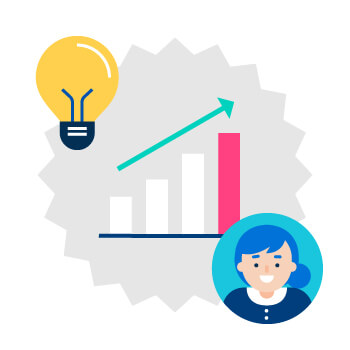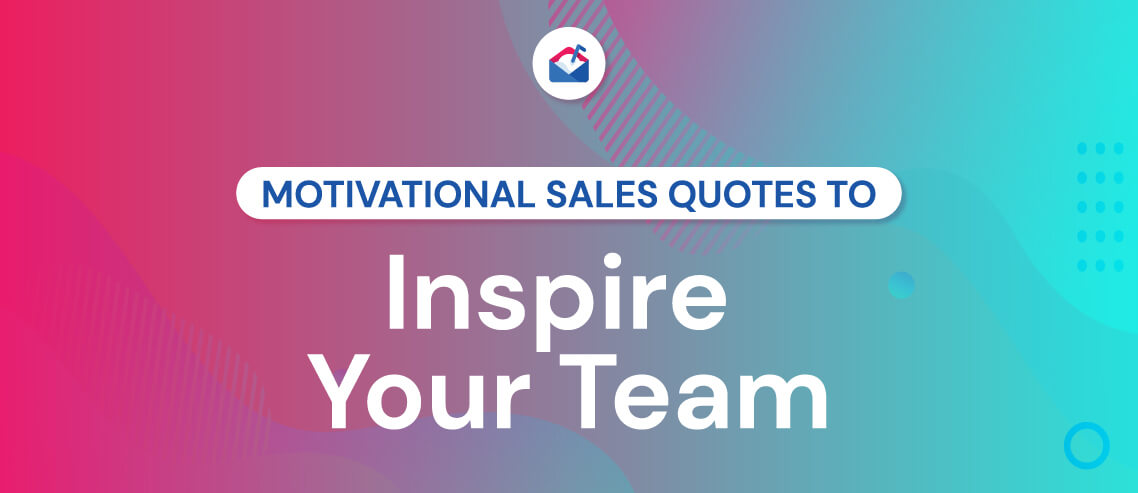What is B2B Sales? Plus, A Look at B2B Prospecting

Contents
B2B sales…
If you’ve ever wondered what it is and why it stands out from other types of sales, look no further.
Here, you’ll learn what it is, why it’s unique, how it’s done, and what you need to succeed in B2B sales.
Ready? Let’s dig in!
What Is B2B Sales?
B2B, or business-to-business, refers to sales of products or services to businesses rather than individual consumers.
B2B sales are unique because the products being sold are often higher priced than consumer models, and each individual sale requires multiple touches. That being the case, B2B sales often take longer and are more complex than other types of sales.
The B2B Buyer’s Journey
B2B sales require unique skills to keep the deal moving forward. To understand why, we need to take a quick look at the B2B buyer’s journey.
According to Gartner, B2B buyers go through 6 distinct stages in their buying journey.
Notice that two-thirds of this journey may be completed without input from a salesperson. That’s because the organization must know what its needs are, the problems it’s trying to solve, and the available options before initiating a sales discussion with a vendor.
That said, the journey along this path is anything but straight. According to Gartner, buyers will revisit each stage along this path at least once.
In many cases, they feel the buying decision is too complicated. In this case, they’ll rely heavily on research and advice from the sales reps they talk with.
Selling to these buyers requires a consultative selling approach. They must be able to simplify the buying journey, helping buyers reach certainty that they’ve found the right solution for their problem and that it can be implemented quickly and easily.
“Certainty” is key here.
In B2B purchasing decisions, making the wrong choice can be dangerous. If the decision-maker makes the wrong choice, spends too much money, or harms growth or profits with the purchase, it can often mean their jobs are on the line.
Knowing this, they’re often more cautious in taking action than they might be in a B2C purchase, where have all the control.
A Common Trait of B2B Sales: The Complex Sale

“Complex sale” is a term used to describe enterprise sales.
- Deal sizes are in the 6 figures or higher.
- The buyer has multiple stakeholders, who may all have different requirements for the solution they’re looking for.
- It may take 10 or more touches to speak with your initial contact, and another 8 to book a meeting.
- It’s often difficult to identify the real decision-maker.
In complex sales, closing the deal requires a lot of finesse. While it’s common for it to take 3 months to close, it some instances, the deal can drag on for as many as 18 months.
In that time, the B2B sales professional must gather a deep understanding of what the buyer needs, fears, hopes for, and wants. They must meet with representatives of every team that will use the product, consult with them, and advise them on the best way to solve their problem.
For example, for a software application:
- The C-Suite wants to a cost-effective solution that can be onboarded quickly.
- Team managers want their team to be sure work isn’t interrupted during the transition. They may be expected to take on a higher workload or deliver at a higher rate with your solution — and they want to be sure they can do that.
- Users want to be able to perform tasks with fewer keystrokes, perhaps automating things that used to be done manually.
Ideally, the rep can bring all these disparate needs together, and put together a package or deal that works for everyone.
The key to moving the deal forward is to get to know everyone who has a say in the final decision. You need to understand each of their needs and expectations. And you need to be able to sell your solution to each of them.
An Overview of the B2B Sales Process

1. Research and Prospecting
Research needs to be done on several levels:
- The industries and businesses that are most likely to need (and buy) your product
- What those businesses are like (think demographics and psychographics, so it’s easy to identify your ideal prospect)
- Who in the org is the best person to reach out to?
- Who will likely be the champions and the decision-makers?
Once you know who your ideal customer is, the solutions they’re looking for, and how to contact them, you can build a list of leads, ready for your sales reps to reach out to.
In many cases, research and prospecting are done by business development representatives.
2. Connect with Prospects
First contact is generally done through cold emails or cold calls. The goal at this stage isn’t to sell, though. It’s merely to “warm them up,” or find out if the lead is in the market for your product — and possibly to generate enough interest that they want to learn more.
The idea is to determine the sales readiness of the lead and, if they are interested, to put them into the sales pipeline.
3. Discovery: Ask Open-Ended Questions
Sales discovery is the process of talking with the lead to determine if they are a sales-ready prospect. Here, the rep asks open-ended questions to understand the lead’s:
- Challenges and frustrations – pain points that could be solved with your product
- Business structure, stage of growth, strengths, and weaknesses
- Budget – could they afford your product?
The goal at this stage is to qualify or disqualify the lead. If they’re a qualified lead, they’re ready to be put into the pipeline. If not, it’s important to avoid wasting their time or yours any further.
4. Pitch and/or Demo
Once the prospect has indicated they’re in the market (and are a good fit) for your product, you want to present it as the solution they’ve been looking for.
For simple, lower-cost products, you may make a pitch as soon as the prospect shows interest. Simply introduce the product, answer any questions, and make the offer.
But for higher-cost, more complicated solutions, your goal is to schedule a demo, so you can show off your product and give the prospect an inside look at how it works.
5. Proposal and Negotiation
Complex sales (sales of the complicated solutions we just talked about) may take weeks, months, or even a year or more to close.
In many cases, the prospect is interested in your product, but they need to iron out the details of the purchase, confirm implementation and customer support, get all their stakeholders on board. In these situations, there are multiple decision-makers, and you need to work with each of them to get their buy-in.
Negotiating the final deal and answering questions is what makes these deal take longer than sales of lower-cost products.
Once you’ve negotiated terms, closing the deal is a matter of drawing up the contract and getting a signature on the dotted line.
6. Close the Deal
You might think that a signature is the end of the sales process. In once sense it is. You’ve come to an agreement and finalized your negotiations.
But that’s when the real work begins. Your task at this stage is to hand off your new customer to customer support, so onboarding can begin. You also want to be sure that every promise is fulfilled.
Many deals have been lost after the contract was signed — simply because the onboarding experience wasn’t everything the customer expected.
Now, let’s back up a little and look at how this entire process starts. Namely, where do you find leads?
Sources of B2B Sales Leads
Here are some smart ways to generate sales leads:
- Ask current customers for referrals.
- Reconnect with closed-lost opportunities
- Use LinkedIn’s Sales Navigator to find people who fit the profile of your ideal prospect.
- Create a report that will appeal to your ideal prospect, and gate access with a lead generation form.
- Write a blog post that describes your solution, and offer a free consultation in the close.
- Write social media posts that talk about the problems your product solves, and include the offer of a free consultation.
- Create a case study, and offer a free consultation as the CTA.
- Use live chat on your website.
- Attend networking events.
- Host events in major cities where your prospects live.
How to Land a B2B Sales Interview
Finding the right company and role is one part of the battle. But to give yourself the best chance of getting your sales resume noticed and securing an interview for your dream sales job, you need to lay the groundwork.
Follow these five steps to give yourself the best chance of landing an interview:
- Update your LinkedIn profile. Your profile on LinkedIn will often be the first port of call for recruiters and hiring managers. As a minimum, ensure all the sections are filled out, and join in with conversations that are relevant to the types of B2B sales role you’re seeking.
- Start networking. Now that your LinkedIn profile is ready, you can start reaching out to people in the B2B sales world. Connect with employees of the company you’re planning to apply for, making it clear why you’re reaching out. Many organizations run referral bonuses, which might encourage them to pass your details on to hiring managers.
- Seize the initiative. Don’t wait for opportunities to land in your lap; reach out to sales managers and recruiters via email and phone calls. Ask about the types of sales roles they have available, or are planning to recruit for in the coming months.
- Upskill yourself. Sure, most organizations taking on entry-level salespeople will give you some sort of on-the-job training. But you can steal a march on the competition by signing up for an external training program focusing on the type of role you want to land, such as training for SaaS sales through programs like Aspireship and Elevate.
- Do your homework. Carry out all the research you can on the company, its products, and its customers. That’ll help you convince hiring managers and recruiters that you’re genuinely interested in working for them, not just applying for every job you see.
How to Prepare for a B2B Sales Interview
You’ve found the perfect B2B sales role, attracted the attention of the hiring manager, and landed yourself an interview. Now comes the most crucial step of all: making a great impression.
Clearly, you can’t afford to leave anything to chance. Instead, use these three tips to ensure you’re well prepared for your sales interview:
- Prepare your backstory. This is your first sales job, so your interviewers will want to know that this is definitely the right career path for you. Explain why you’re looking for sales jobs — perhaps you were inspired by a friend or family member, or have always wanted a role that requires entrepreneurial skills and initiative.
- Come up with examples of multitasking. Sales isn’t just about selling. You’ll also have to attend meetings, go to training sessions, complete paperwork, and much more. Demonstrate instances when you’ve had to cope with multiple tasks and deadlines simultaneously.
- Identify intelligent questions. By this stage, you should have done plenty of research about the company in question. But there are likely things you can’t learn — things you’ll only find out by speaking to an insider. Come up with a handful of questions to further your understanding and highlight the knowledge you’ve already acquired.
How to Follow Up After a B2B Sales Interview
Just because you’ve completed the interview, that doesn’t mean you can afford to take your foot off the gas. After all, the best salespeople are persistent. You need to demonstrate that same level of persistence by following up after the interview.
Fortunately, this isn’t a difficult process. Simply send an email to all the people you met during the interview process, thanking them for their time and reiterating your interest in the role.
Your timing here is important. Decisions on sales roles are rarely long and drawn out, especially for entry-level positions, so if you wait, you risk missing the boat. Instead, send your follow-up on the same day as the interview.
If you haven’t heard anything back within three or four days, it’s perfectly acceptable to send an additional follow-up asking for an update on the hiring process and when you can expect to find out about the job.
The Successful B2B Sales Representative

B2B sales can be difficult. But it can also be rewarding if you’re willing to continually refine your sales skills.
Soft Sales Skills
Emotional intelligence (EQ) – Sales reps must be able to empathize with the prospect’s problems and be willing to spend enough time talking with them to discover the full depth of their problems. It’s also important to know when your product is the right fit, and when it’s best to admit your product isn’t the best solution to their problem.
Active listening – Active listening means you aren’t trying to push your agenda, and you aren’t formulating your response as the prospect is speaking. Instead, you’re listening for more than mere words. You’re hearing the emotions and desires that are communicated with body language, facial expressions, and tone of voice.
Time management – To hit quota, you need to be able to manage your time, so you’re as productive as possible with the time you’ve got. You’ve also got to be able to follow-up with leads in a timely manner. Nothing kills a deal faster than the loss of trust.
Persistence – Salespeople hear “no” a lot. It’s important to be able to stay on track, brushing off any feelings of rejection, and continually sending the next email or making the next call.
Sales Skills
Finding new opportunities – If the pipeline dries up, you won’t have prospects to sell to. It’s important to understand where to find new opportunities and how to make that initial contact.
Research – A lot of lead generation and consultative selling depends on research. You need to be able to learn the background on companies, prospects, decision-makers, trends, and more. You also need to be aware of your competition and other solutions your prospect might be considering.
Networking – Salespeople depend heavily on their network to find new opportunities, build relationships with leads, and to find new career opportunities.
Speaking and presentation skills – As a salesperson, you’ll be talking to people, consulting with them and presenting your solutions. You’ll need great communication skills to do this well.
Negotiation – Every deal with go through a negotiation phase, where the prospect throws up walls and pull out every objection in the book. You need to be able to overcome objections and navigate this phase of the selling process to succeed.
Closing the deal – Closing the deal takes skills. You need to know when and how it’s done. It helps to be versed in the top closing techniques being used today. It also helps to be willing to role play and practice closing until it’s a fine art.
B2B Sales Job Description
In B2B sales, you will likely start out as an SDR, or sales development representative. In that role, you’ll work with an AE, or account executive, finding and qualifying leads for the AE to develop and close. To do this, your tasks will include:
- Finding qualified sales opportunities in target accounts
- Filling in the data of those accounts
- Cold calling and cold emailing to identify suspects and prospects
- Nurturing leads and handing them off to the AE
SDRs may progress to the account executive role, where the primary goal is to close deals that are developed by the SDR. As an AE, your tasks will include:
- Conducting discovery and doing demos
- Consulting and nurturing relationships with stakeholders and decision-makers
- Negotiating and closing deals
- Handing off the account to customer support and making sure all promises are fulfilled
B2B Sales Tips

Leverage Sales Enablement
It’s important to realize that no sales rep can reach successful working alone. Sales is a team sport.
Invaluable to the sales process is Sales Enablement — a person or team who is responsible for providing the content, tools, and training that salespeople need to move deals through the pipeline.
In B2B sales, you can boost the velocity of lead generation, qualification, and demo scheduling if you leverage Sales Enablement. Use the resources they provide to nurture leads and move prospects quickly through the pipeline.
Lean into Social Selling
The modern buyer doesn’t respond to traditional sales tactics. Gone are the days of shoving your foot in the door and talking louder. To succeed, you must be, first, trustworthy, and second, relevant.
For that, social selling is becoming an alternative to cold emails and cold calls. With this approach, you aim to build a relationship to break the ice and establish trust. Then, when the opportunity arises, it’s much easier to have a sales conversation.
Be aware, social selling isn’t about connecting and pitching. The fact that someone accepted your connection request doesn’t mean they’re in the market for your product.
Instead, social selling is about creating awareness and adding value in advance. Then, if the connection finds themselves in the market for your product, you’ll likely be the first person they go to for more information.
Tip: To get started in social selling, you’ll need to leverage your LinkedIn summary. Here’s how.
Build a Strong Reputation
Modern sales is usually based on a consultative approach. The sale, itself, isn’t the (primary) aim — instead, if it becomes clear that your product isn’t going to solve the prospect’s problem, you’ll excuse yourself or recommend another product.
Why?
Success in sales depends on being a trusted thought leader, someone who is able to assess the situation, diagnose the problem, and provide workable solutions.
To achieve this level of success, you must develop a strong reputation of treating people right. You’ve got to be known for delivering as promised and providing a stellar experience after the sale — not just before.
Build this level of trust, though, and you can be unstoppable, both as an individual contributor and as an organization trying to stand out competitively in B2B sales.
B2B prospecting is one of the most critical parts of the sales process – without a steady stream of prospects, you have no opportunities to create revenue. It’s also one of the most difficult, with more than 40% of salespeople claiming that B2B prospecting is their biggest challenge, followed by closing (36%) and qualifying (22%).
Finding Qualified Prospects
B2B prospecting works best when you have a clear vision of the kind of client you’re looking for. The qualified prospect is an intersection of three criteria:
- The client sees value in what you do
- The client has the budget to pay for what you do
- You have the confidence that you can deliver good results to the client
Think of each of these as a leg of a three-legged chair: take away one leg and the chair isn’t functional.
Finding Reliable Contact Info
You need more than just a name for B2B prospecting, especially if you want to bypass gatekeepers and go straight to the source.
Tools to Use
The biggest benefit of using tools is to remove much of the labor and guesswork. If you’re looking for email addresses, VoilaNorbert offers a cost-effective solution with up to a 98% success rate. Norbert can also find the current job title, company, location and social profiles of the people on your list.
Zabasearch is a powerful, free people database that specializes in searches by name or phone number. Other tools like Clearbit, Zoominfo, DiscoverOrg, InsideView, Datanyze, Nimble, and Adapt can also help you connect directly to decision-makers, not just the front desk.
Manual Ways to Find Contact Info
If you’re worried about the reliability of data tools, you can do your own recon to find the most recent phone numbers and email addresses.
Start with advanced Google search operators, such as site:twitter.com + name + company name. This extra detail gives you super-specific results quickly.
You can also look up personal information on a prospect’s Facebook profile, or call their company directly to get a direct phone number or extension. Or, if you have shared contacts on LinkedIn, leverage your network for an introduction.
Reaching Out to B2B Prospects
There’s no single best approach to sales prospecting, even within your own organization. Successful sales prospecting typically uses a multifaceted methodology to connect with potential customers and keep your opportunity numbers high.
Ideally, you need to be doing a combination of cold emailing, cold calling, and social media outreach to effectively connect with prospects. Put the following best practices in each of these categories into motion to avoid leaving gaps in communication.
Additionally you can include a business proposal made either with a proposal software or manually, to set a more formal tone with the business you wish to collaborate or sell too.





